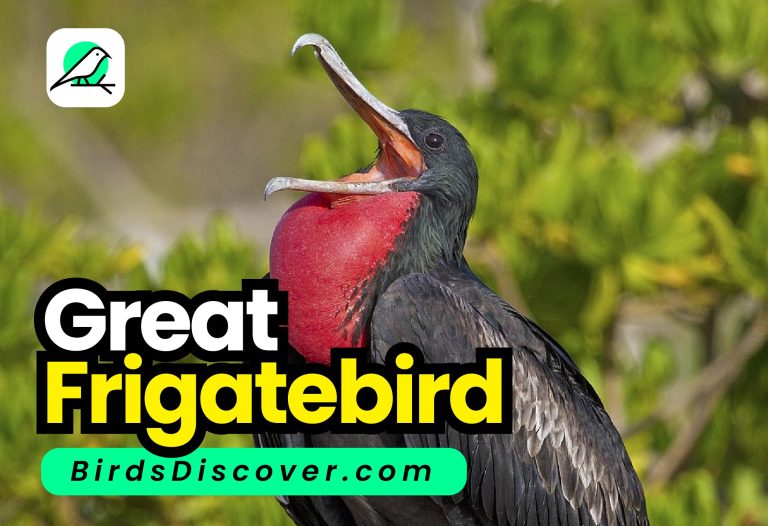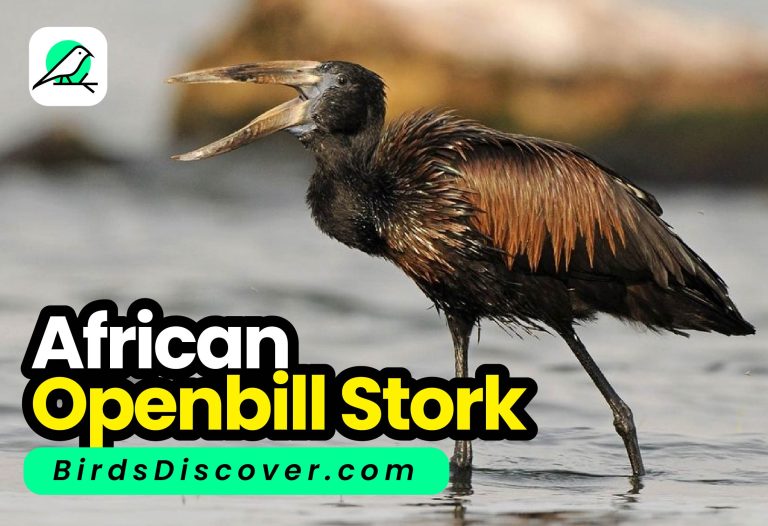Black Skimmer Diet: Predators, Characteristics, and More [Rynchops niger]
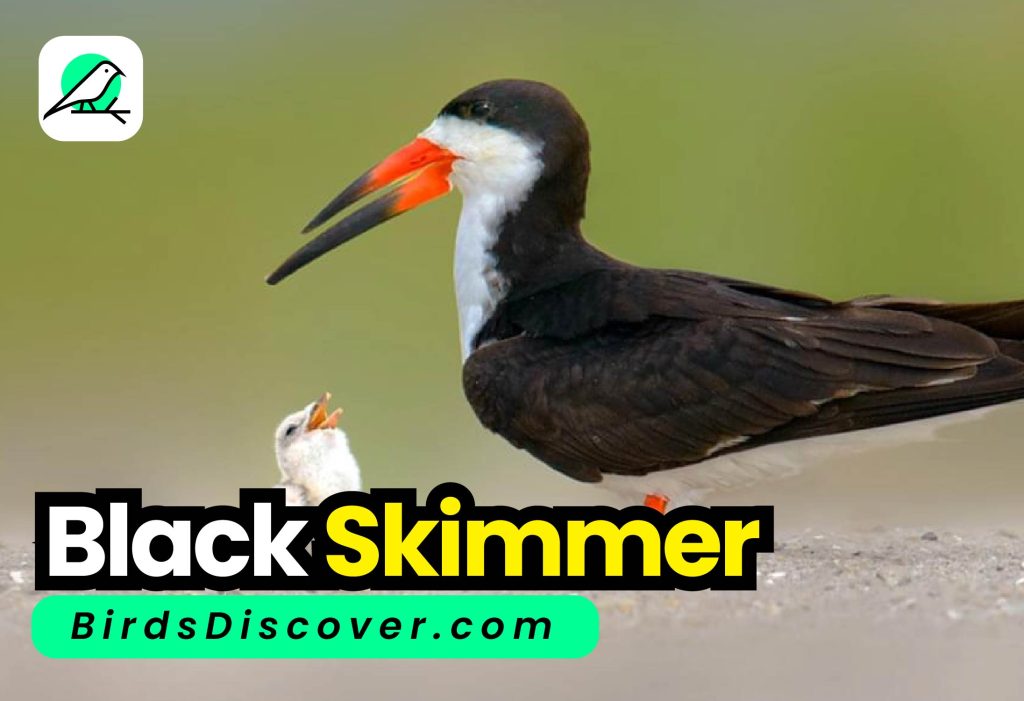
This bird features a unique bill where the lower mandible is longer than the upper, aiding in its feeding technique.
They prefer nesting on sandy shores and require clean, open areas for foraging.
Black Skimmer
Black Skimmer (Rynchops niger) is a distinctive shorebird recognized by its long, slender bill with the lower mandible longer than the upper, designed for skimming the water’s surface while foraging for fish and invertebrates. It has a striking appearance with a black upper body and white underparts. This bird inhabits sandy and gravelly coastal areas, estuaries, and riverbanks across the Americas, often nesting in colonies. Its unique feeding behavior and elegant appearance make the Black Skimmer a notable species in avian studies.
Black Skimmer Sound
Scientific Classification
| Category | Scientific Classification |
|---|---|
| Kingdom | Animalia |
| Phylum | Chordata |
| Class | Aves |
| Order | Charadriiformes |
| Family | Rynchopidae |
| Genus | Rynchops |
| Species | Rynchops niger |
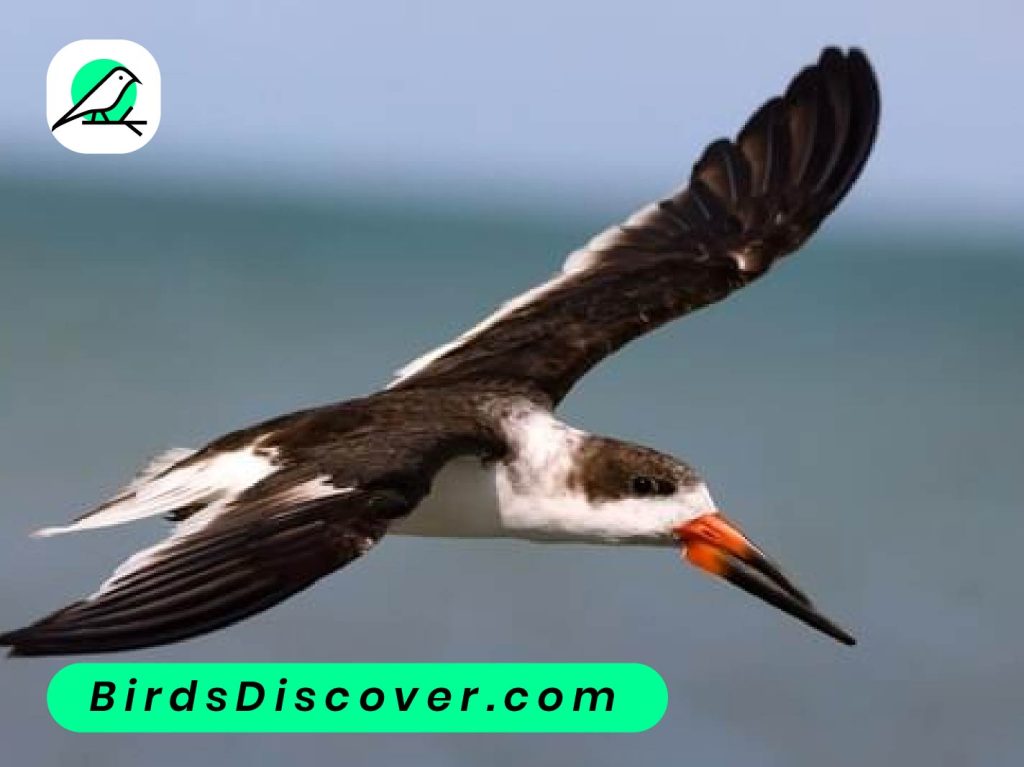
Taxonomy
The Black Skimmer (Rynchops niger) belongs to the animal kingdom Animalia and is classified within the phylum Chordata, which includes all animals with a spinal column. It is part of the class Aves, indicating it is a bird. Within the order Charadriiformes, which encompasses various shorebirds and waders, the Black Skimmer is assigned to the family Rynchopidae. This family is characterized by its members’ distinctive long, specialized bills used for skimming water surfaces. The genus Rynchops includes the Black Skimmer and its close relatives, and the species designation niger specifically refers to this bird. This taxonomy highlights the Black Skimmer’s evolutionary adaptations and ecological niche as a specialized forager in coastal and freshwater environments.
Description
The Black Skimmer (Rynchops niger) is a striking and distinctive bird renowned for its unique physical features and behavior. It is medium-sized with a sleek, black upper body and white underparts. One of its most notable characteristics is its long, slender bill, where the lower mandible is significantly longer than the upper mandible. This adaptation is specialized for its feeding technique, which involves skimming the surface of the water with the lower mandible to catch small fish and invertebrates. The Black Skimmer’s wings are long and pointed, and its legs are relatively short, aiding in its graceful flight and efficient foraging. During the breeding season, it nests in colonies on sandy or gravelly beaches, where its vocalizations—a series of harsh, clipped calls—are commonly heard. The bird’s striking appearance and distinctive foraging behavior make it an iconic species among shorebirds.
Species in same Genus
The genus Rynchops, to which the Black Skimmer (Rynchops niger) belongs, includes three species:
- Black Skimmer (Rynchops niger) – Found in the Americas, it is the most widely recognized member of the genus.
- Indian Skimmer (Rynchops albicollis) – Native to South Asia, particularly in India, Sri Lanka, and parts of Southeast Asia.
- African Skimmer (Rynchops flavirostris) – Inhabits parts of Africa, primarily along the coasts and large river systems.
These species share similar adaptations, such as the distinctive long lower mandible, which is used for skimming the water to catch prey. However, they differ in their geographical ranges and some aspects of their plumage and behavior.

Behaviour and Ecology
The Black Skimmer (Rynchops niger) exhibits intriguing behavior and ecological adaptations that are closely tied to its habitat and feeding strategies.
Behavior:
- Foraging: The Black Skimmer is renowned for its distinctive foraging method, where it flies low over water with its lower mandible submerged. The bird skims the surface, and when it contacts prey, it snaps the bill shut. This technique allows it to catch small fish, crustaceans, and insects effectively.
- Breeding: During the breeding season, Black Skimmers nest in colonies on sandy or gravelly beaches. The nests are typically simple scrapes in the sand, and the birds lay a few eggs at a time. They engage in elaborate aerial displays and vocalizations to establish territory and attract mates.
- Vocalizations: Their calls are harsh and clipped, often heard during the nesting period. These vocalizations help in maintaining colony cohesion and signaling alarm.
Ecology:
- Habitat: Black Skimmers prefer coastal areas, estuaries, and large riverbanks where they can find shallow water for foraging. They are often seen along sandy shores, where they can nest and find ample food.
- Diet: Their diet primarily consists of small fish and invertebrates found in shallow waters. The unique skimming behavior is adapted to detect and capture these prey items efficiently.
- Migration: While some populations are resident and do not migrate, others may undertake seasonal movements in response to changes in food availability and breeding conditions. Migration patterns can vary based on geographical location.
Overall, the Black Skimmer’s behavior and ecological niche are finely tuned to its environment, making it a well-adapted and fascinating species within its coastal and freshwater habitats.
Breeding
- Nest Site: Black Skimmers typically breed in colonies on sandy or gravelly beaches, riverbanks, and occasionally on man-made structures like levees. The nesting sites are usually chosen for their relative safety from predators and proximity to foraging areas.
- Nesting: The nest is a simple depression or scrape in the sand, often lined with small pebbles or shell fragments. Black Skimmers may also use existing depressions or scrape nests from previous seasons.
- Eggs and Incubation: The female usually lays 3 to 5 eggs, which are incubated by both parents. Incubation lasts about 23 to 25 days, and during this period, both parents take turns keeping the eggs warm and protecting them from predators.
- Chick Rearing: Once hatched, the chicks are covered in down and are precocial, meaning they are relatively mature and mobile soon after birth. The parents continue to care for and feed the chicks, which fledge (grow feathers and learn to fly) around 4 to 6 weeks after hatching.
Feeding
- Foraging Technique: The Black Skimmer is known for its distinctive foraging technique. It flies low over the water with its lower mandible submerged, skimming the surface to detect and catch prey. The bill snaps shut when it makes contact with food, typically small fish, crustaceans, and insects.
- Diet: The diet of the Black Skimmer primarily consists of small fish and aquatic invertebrates. The specific prey items can vary depending on the habitat and availability of food. In estuarine environments, they may also feed on small mollusks and crustaceans.
- Feeding Habitat: They are most commonly found in shallow waters where their skimming technique is most effective. This includes coastal areas, estuaries, and large rivers with calm, shallow waters.
The breeding and feeding behaviors of the Black Skimmer are closely linked to its habitat and ecological niche, making it well-adapted to life along sandy or gravelly shorelines and in shallow aquatic environments.
Threats
- Habitat Loss: Coastal development and human activities can lead to the destruction of critical nesting habitats. Beachfront construction, increased human activity, and pollution can reduce suitable nesting sites and disrupt breeding.
- Predation: Eggs, chicks, and even adult Black Skimmers are vulnerable to predators such as gulls, crows, raccoons, and domestic animals. Predation can have significant impacts on reproductive success.
- Environmental Pollution: Oil spills, plastic pollution, and chemical contaminants can affect the health of Black Skimmers by contaminating their food sources and nesting areas.
- Climate Change: Rising sea levels and increased frequency of extreme weather events due to climate change pose a threat to nesting sites. Coastal erosion and severe storms can destroy nests and reduce available habitat.
Lifespan:
- In the Wild: Black Skimmers typically have a lifespan of 10 to 15 years in the wild. Survival rates can vary based on environmental conditions, food availability, and predation pressures.
- Captivity: In controlled environments, such as zoos or wildlife rehabilitation centers, they might live slightly longer due to fewer threats and better healthcare.
Speed:
- Flight Speed: Black Skimmers can reach speeds of about 30 to 35 miles per hour (48 to 56 kilometers per hour) during flight. Their aerodynamic build and strong wings enable them to travel efficiently over water while foraging.
- Skimming Speed: When foraging, they fly at slower speeds, typically just above the water’s surface, to effectively skim and capture prey. This skimming behavior requires precision rather than speed.
The Black Skimmer’s lifespan and speed reflect its adaptations to life along coastal and riverine environments, while its threats underscore the challenges it faces from environmental and human pressures.
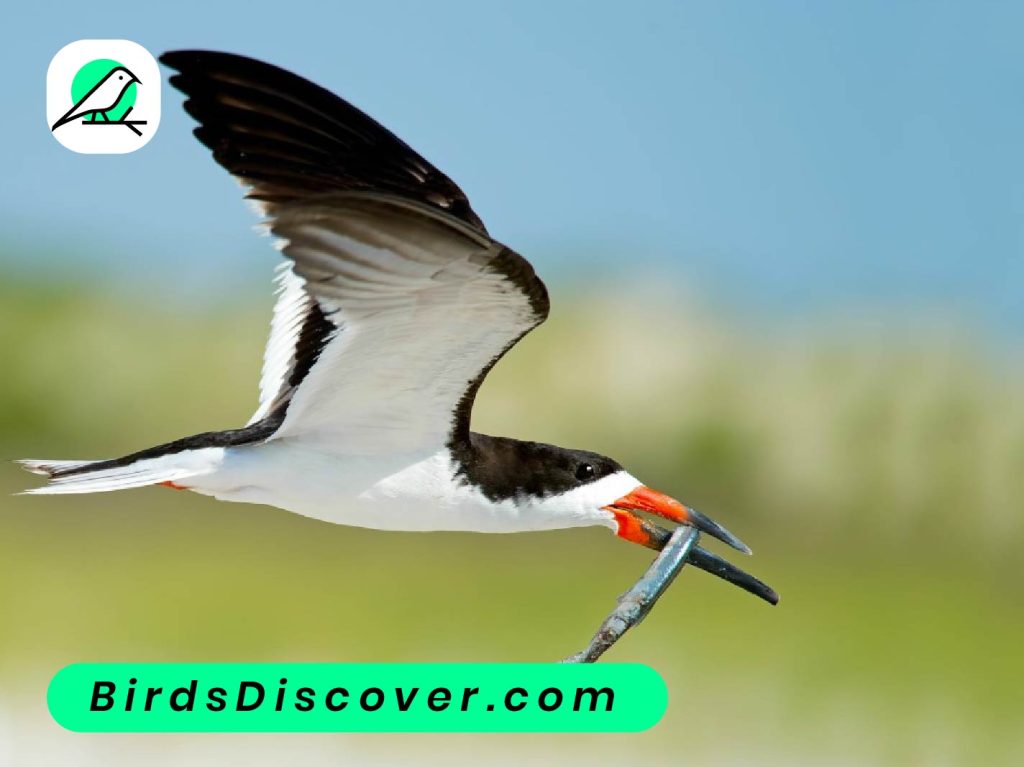
Common Names in Different Languages
| Language | Common Name |
|---|---|
| English | Black Skimmer |
| Spanish | Rascador Negro |
| French | Râle à Long Bec |
| German | Schwarzschwanz-Skimmer |
| Portuguese | Rasteirinha |
| Italian | Skimmer Nero |
| Dutch | Zwartstaart-schaarbek |
| Swedish | Svartskärmsnäppa |
| Russian | Чернощёкая шилоклювка |
| Chinese | 黑翅刀嘴鹬 (Hēi chì dāo zuǐ yù) |
| Japanese | クロハラアジサシ (Kurohara ajisashi) |
| Korean | 검은부리삵 (Geomeun buri sab) |
Summary
The Black Skimmer (Rynchops niger) belongs to the animal kingdom Animalia and is classified within the phylum Chordata, which includes all animals with a spinal column. It is part of the class Aves, indicating it is a bird. Within the order Charadriiformes, which encompasses various shorebirds and waders, the Black Skimmer is assigned to the family Rynchopidae. This family is characterized by its members’ distinctive long, specialized bills used for skimming water surfaces. The genus Rynchops includes the Black Skimmer and its close relatives, and the species designation niger specifically refers to this bird. This taxonomy highlights the Black Skimmer’s evolutionary adaptations and ecological niche as a specialized forager in coastal and freshwater environments.
FAQS
1. What do Black Skimmers eat?
Black Skimmers primarily feed on small fish and aquatic invertebrates. They use their unique long lower mandible to skim the water’s surface while flying, catching prey as it contacts their bill.
2. Where do Black Skimmers breed?
Black Skimmers breed in colonies on sandy or gravelly beaches, riverbanks, and occasionally on man-made structures. Their nests are simple scrapes in the sand, often located in areas with minimal vegetation.
3. What are the main threats to Black Skimmers?
Key threats to Black Skimmers include habitat loss from coastal development, predation by other animals, pollution of their feeding and nesting areas, and the impacts of climate change, such as rising sea levels and severe weather events.
4. How long do Black Skimmers live?
In the wild, Black Skimmers typically live between 10 to 15 years. Their lifespan can be affected by factors such as predation, environmental conditions, and food availability.
5. How fast can Black Skimmers fly?
Black Skimmers can reach speeds of about 30 to 35 miles per hour (48 to 56 kilometers per hour) during flight. However, their skimming technique involves slower speeds close to the water’s surface.



